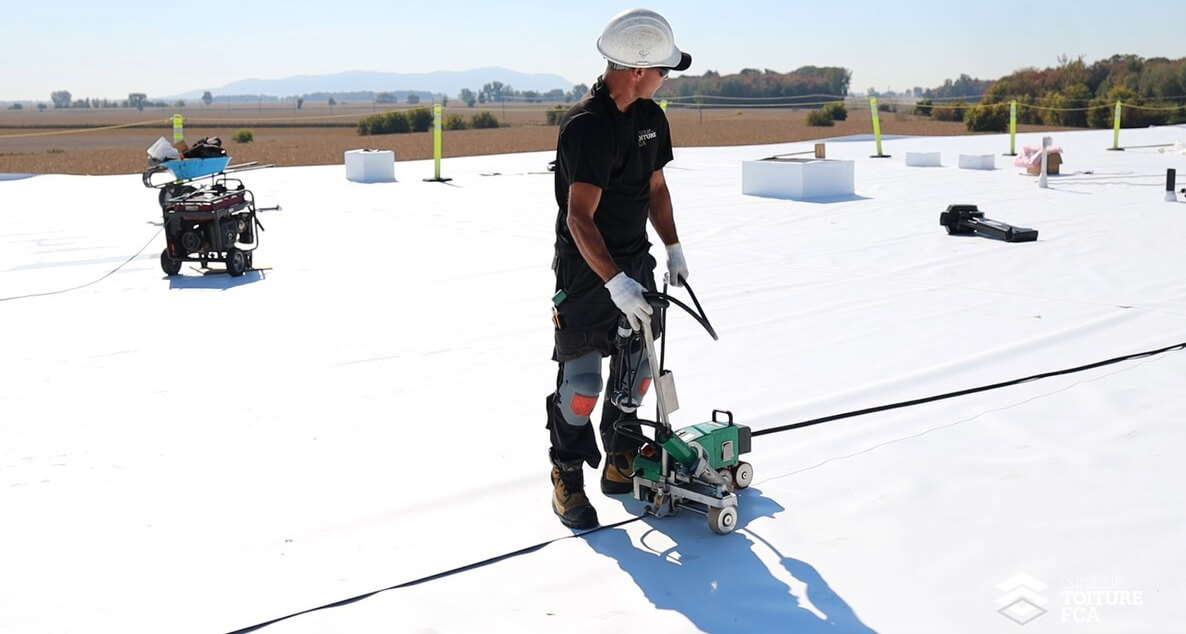
Home > Blog posts > Our Guide to Commercial Insulation
Our Guide to Commercial Insulation
Commercial insulation on a roof plays a crucial role in ensuring occupants’ comfort, but also in the building’s energy efficiency and the roof’s durability. No matter if it is for a warehouse, an office tower, a restaurant, or any other type of business, choosing proper insulation and installing it according to current standards is essential.
Find out more about the importance of insulation, the different types of insulation and installation methods, and more.
The Importance of Insulation in Commercial Buildings
Occupant comfort is an element that should not be overlooked and one that is a direct benefit derived from proper insulation; but it is not the only one. Thermal insulation also ensures that the heat that comes from the building is not transferred to the materials in the roof, thus creating condensation with the cold exterior air. This phenomenon could lead to material deterioration or corrosion in the structure.
Hand in hand with the membrane, insulation also plays a protective role for the roof, shielding it from bad weather conditions, debris and damages caused to the structure related to human activity on the roof.
Finally, proper insulation can help with protection from fires and even improve the building’s soundproofing.
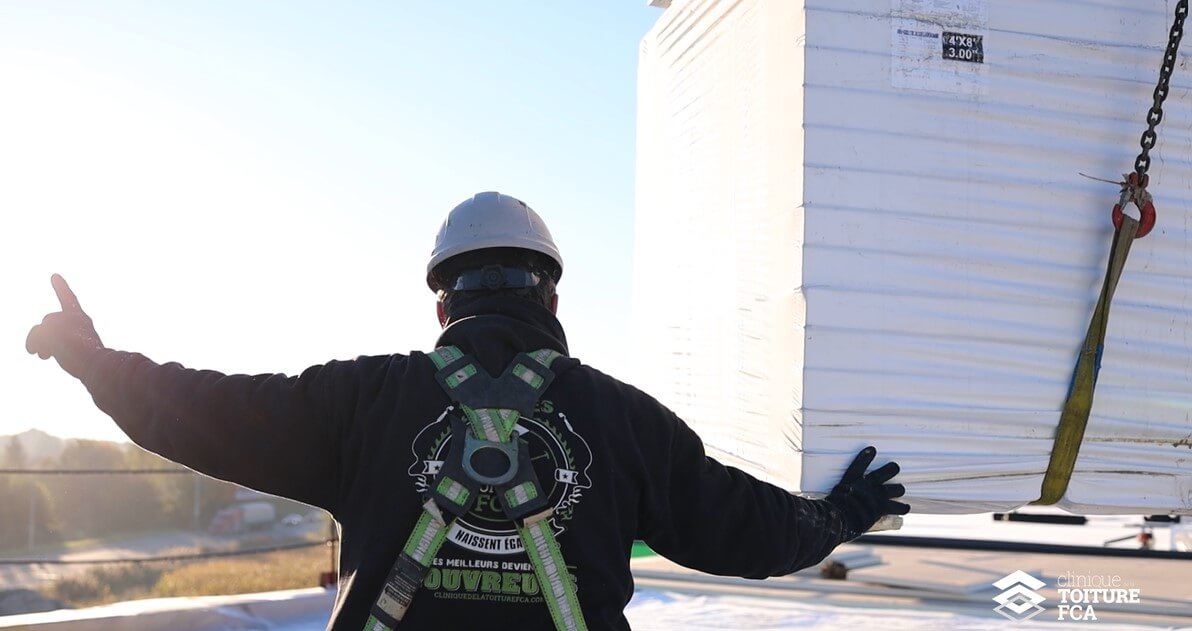
Different Types of Insulation for Commercial Flat Roofs
There are different types of insulation for commercial roofs, and each one comes with its own set of features and advantages.
Among the most common, you will find:
Polyurethane Foam
Polyurethane is greatly appreciated for its very high R-value (7.2). Because of this, it is often used for commercial insulation, and more specifically for buildings in which there are freezers or refrigerators. It is a high-performance and stable material, on top of being resistant to humidity.
Polyisocyanurate
With a 6.8 R-value, this closed cell plastic foam adheres very well to materials like fiber glass or metal sheets. It is one of the best choices for thermal efficiency.
High-Density Extruded Polystyrene (XPS)
This material is obtained through an extrusion process with polystyrene polymer, producing a rigid closed cell insulating foam. It is often used for inversed or protected membrane roof systems.
High-Density Expanded Polystyrene (EPS)
Made from the same resins, this polystyrene is created through a different process. Its main advantages are the fact that it is a lightweight material that is also easy to cut, but it can also be more fragile and more sensitive to water and high temperatures. However, it does offer stable resistance over time.
Fiberglass and Mineral Fibers
Although they are among the most frequently used types of insulation when it comes to hot-applied insulation, they are losing in popularity. In fact, they are not recommended for single layer systems, which are the most frequently used today.
Phenolic Foam
This type of insulation was among the most popular in the early 1990s, but it has practically disappeared from the market due to different disputes. If your commercial roof is getting old, then you might have this type of insulation. Today, you can choose to have it reworked, though changing materials is generally recommended.
How to Choose Proper Insulation for your Flat Roof
The first thing to take under consideration when choosing a material is the R-value, which measures its thermal resistance. The higher it is, the more resistant the material, which means that the most efficient it is to maintain heat in the winter and keep the building cool in the summer.
Other than this main criterion, resistance to humidity is also important. In fact, roof materials are often exposed to humid conditions; resistance to humidity is essential to prevent deterioration and a loss of efficiency.
You should also think of durability: when you invest your money in insulation, it is sometimes more profitable to purchase a material that has a longer lifespan. This way, you won’t have to start all over a few years later. This said, we know that your budget must still be taken into account when choosing the right material! We can help you find the best option for your needs.
Finally, other important properties for commercial insulation will greatly depend on the climate in which you live. For more advice on the subject, do not hesitate to contact our team and ask questions.
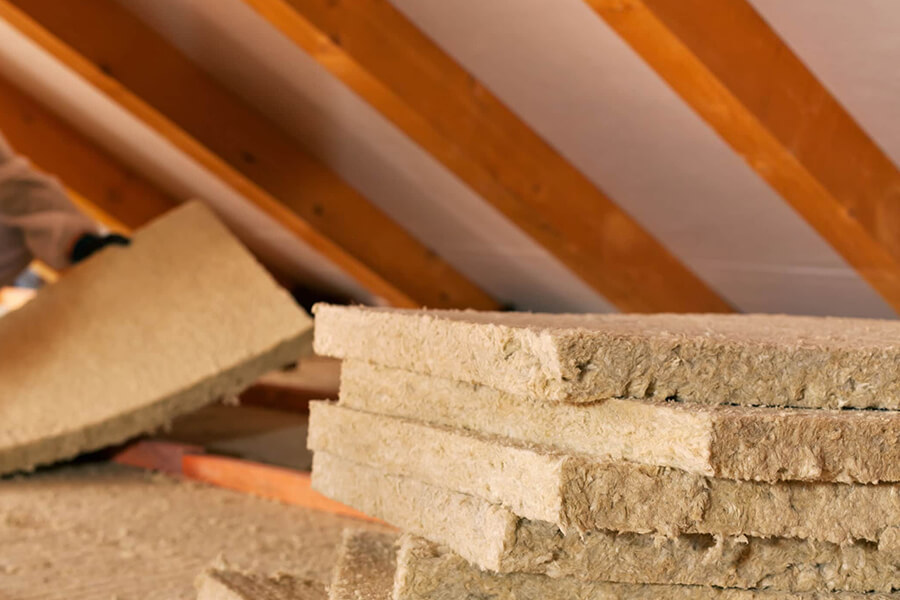
Installation Methods for Flat Roofs
There are three main methods to insulate a flat roof.
The first one is now considered to be obsolete. It is called a vented or “cold” roof and consists of placing the warm part of the insulation towards the bottom, under the membrane, leaving a small sliver of air between the two. This method is not ideal for flat roofs given that it requires ventilation in the roof; without it, it can generate condensation and damage the structure.
The most frequently used method ‒and most appropriate for colder climates like in Quebec- is the “hot” roof system, which consists of:
- Installing a vapour barrier
- Installing the insulation onto the roof structure
- Waterproofing the vapour barrier and the insulation
- Installing the roofing materials
Finally, you could also opt for an inversed roof. This method is sometimes used when you have a hot roof on which you would like to improve the quality of the insulation or simply renovate. You can then apply the insulation over the old membrane and waterproof everything, and then install the new membrane over it.
This method can allow you to minimize the necessary interventions for a more affordable solution.
No matter what method you use for the insulation, it is important to use the right technique, the proper tools, and to respect current standards and regulations. Asking a professional roofer for help remains the best alternative. This way you will ensure that the job will be completed properly, and the insulation will provide you with better performance in the long term. Moreover, it will allow you to take advantage of the warranty on the materials used.
Commercial Flat Roof Insulation Norms and Certifications
In Quebec, commercial insulation must be in compliance with the National Building Code and the Quebec Construction Code. In the latter, new standards came into effect in 2012 when it comes to energy efficiency and ventilation. They have to do with total thermal resistance RSITot and RSIeff values.
New regulations stated in part 11 of the National Building Code have also raised the standards, now requesting a total RSI of 7.22 for your roof. You must also plan for empty space of at least 75 mm between the roof and the new insulation in order to ensure good ventilation.
Some other standards and certifications might also apply:
- ASHRAE 90.1
- Standards from the International Building Code (IBC) and the International Green Construction Code (IgCC)
- UL or FM Standards
- ASHRAE Standard 189
- LEED Standard (Leadership in Energy and Environmental Design)
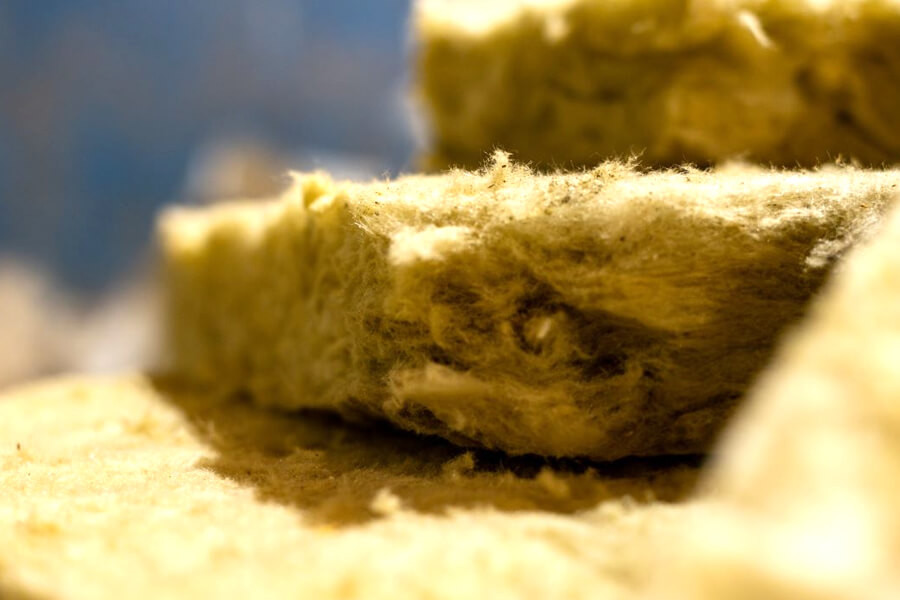
Financial and Environmental Advantages of Efficient Insulation
Investing in efficient insulation provides you with significant financial advantages. By reducing energy consumption for heating and air conditioning, insulation will allow you to save money on electricity. And given that a commercial building can be very energy consuming, these are savings that can quickly become apparent on your bills!
This also has an impact on the environment, given that better energy efficiency also means less CO2 emissions. Moreover, choosing a durable insulation material is also even more advantageous for the environment, given that you are reducing waste and your carbon footprint related to manufacturing and installation processes.
The membrane obviously also has a role to play when it comes to energy efficiency, which is why we recommend solutions like the TPO white membrane.
Flat Roof Insulation Maintenance and Lifespan
The insulation material durability really depends on the material itself! For example, fiberglass has an average lifespan of 20 to 40 years, while expanded polystyrene has a lifespan estimated to 50 years and extruded polystyrene could last between 50 to 75 years.
On the other hand, poorly installed or poorly maintained insulation could mean a lifespan of around fifteen years. This is why the quality of the installation and regular maintenance on your roof both play a crucial role over its health and durability.
Innovations and Trends
The industry is in constant evolution as new technologies are emerging. Among the latest insulation trends, thermal paint and aerogel are gaining in popularity.
The latest innovations are generally more expensive. To find out more and to understand the most appropriate solutions, ask an experienced roofer.
Get a Quote for your Business!
Get an estimate in just 2 quick steps!
*Please allow a minimum of 24 hours for your request to be processed. Thank you for your understanding!
No matter if it is for repairs, renovations or a new construction, Clinique de la toiture FCA can take care of your commercial insulation needs. For a high-quality installation with an excellent warranty, trust in our team, recommended by CAA. Fill in our quote request form!
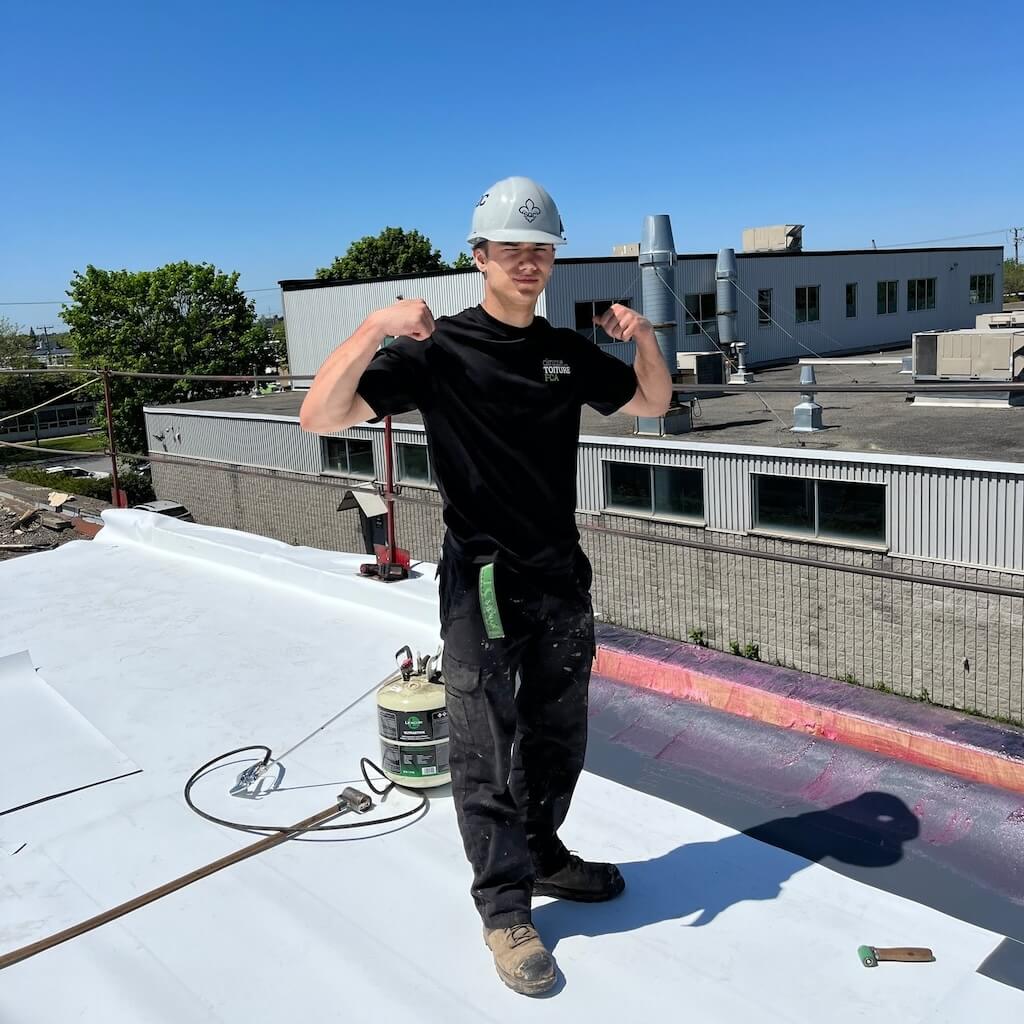
Need help?
Leave us your email address and we will contact you as soon as possible to assess your needs!
Put an end to your water infiltration your clogged drains your roof problems
Leave us your email address and we will contact you as soon as possible to assess your needs!
